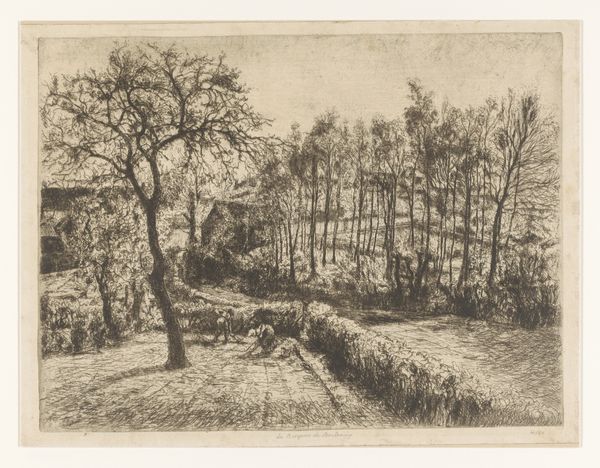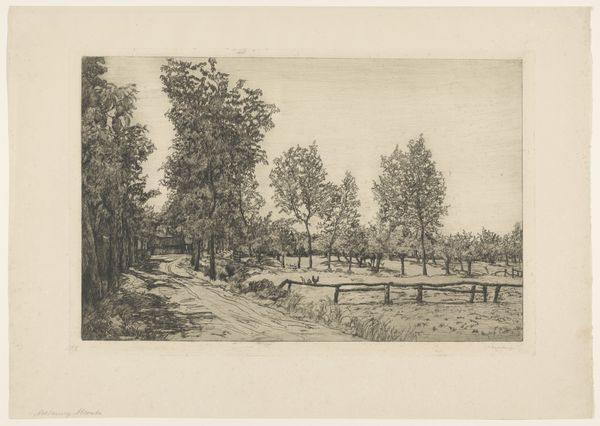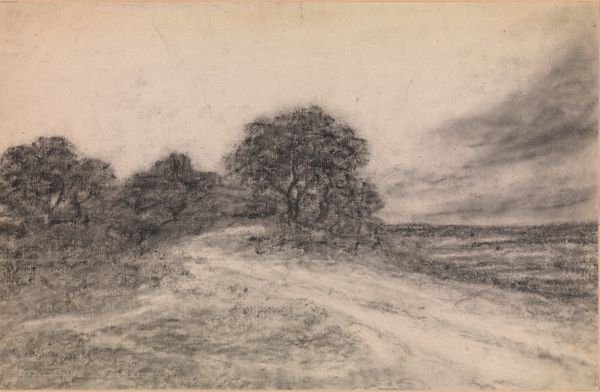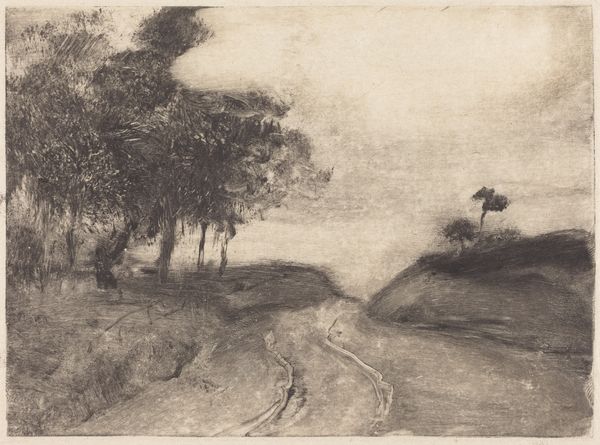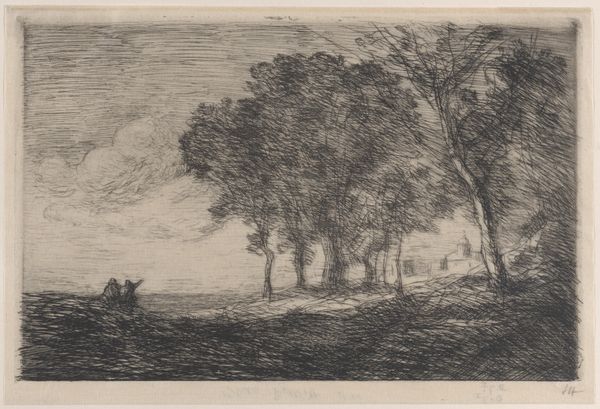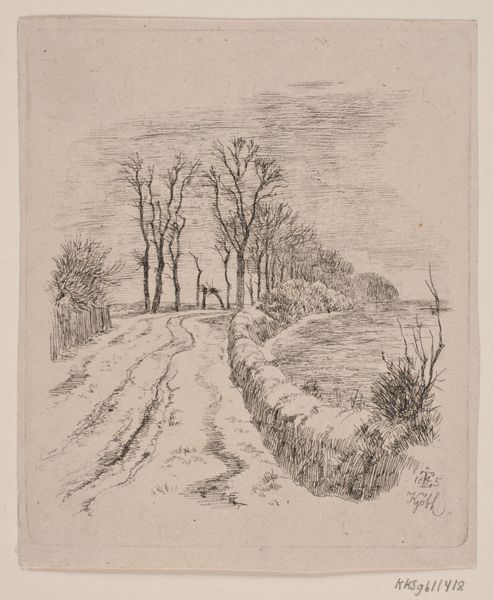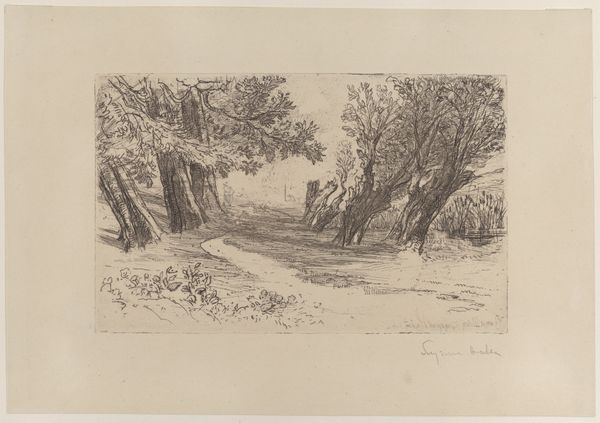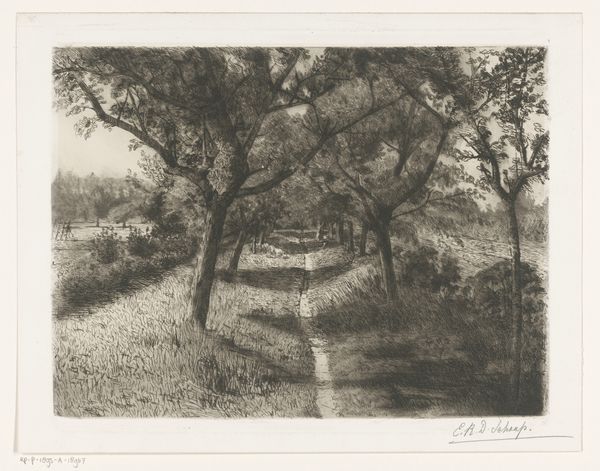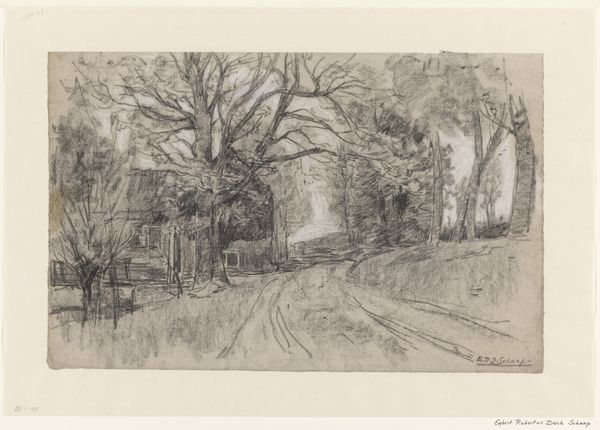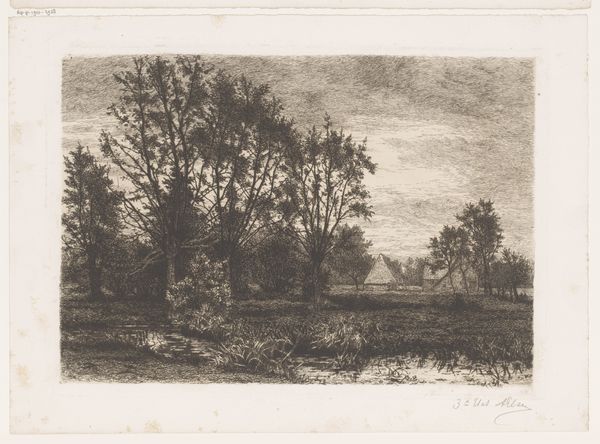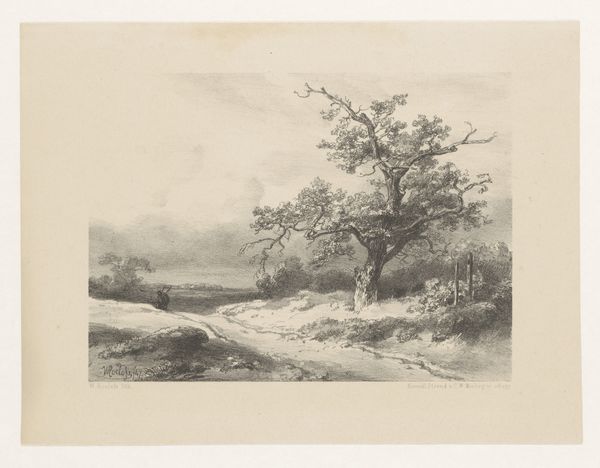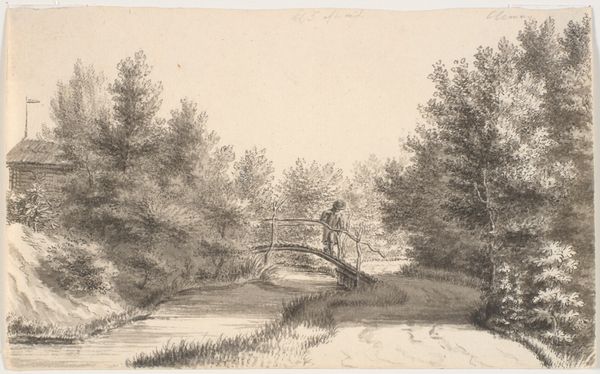
print, etching
#
tree
# print
#
etching
#
landscape
#
etching
#
realism
Dimensions: height 244 mm, width 322 mm
Copyright: Rijks Museum: Open Domain
Curator: We are looking at Adolphe P.H. J. van Weezel Errens' "Landschap met bomen en hei", created between 1876 and 1911. It’s currently housed at the Rijksmuseum. This artwork is an etching, a type of print. Editor: It's a quiet, contemplative piece. The details of the trees, the sandy road, all seem carefully observed. It evokes a feeling of solitude and connection to the natural world. Curator: Absolutely. Landscape art became prominent during this period as the public appreciation for the Dutch countryside grew and was connected to notions of nationhood and the picturesque. These landscapes gained significant institutional support as cultural symbols. Editor: Seeing those ruts in the path makes me wonder who travelled here and what stories the land might tell. Are these common pastoral narratives romanticizing rural life or are there more nuanced considerations to explore regarding access and labor? Curator: It's tempting to frame it simply as romantic. However, one should explore how these types of landscapes also reinforced ideas around land ownership and leisure for particular social classes. This etching allowed wider circulation of these ideologies to the public. Editor: So, how does an etching like this reflect not just an aesthetic appreciation, but also social dynamics of its time? Did it become part of visual rhetoric that justified social imbalances and control? Curator: Exactly! Consider who could afford to display or appreciate this view versus those whose lives were enmeshed with that land. That said, the skill and technique Van Weezel Errens employs does point toward an undeniable artistic ambition. Editor: Yes, I notice the intricate layering in the etched lines; creating depth and texture. While aesthetically pleasing, the challenge remains in teasing out the hidden meanings within what appears initially to be a mere tranquil landscape scene. The role of these serene visuals in shaping societal attitudes cannot be understated. Curator: Agreed. Works like these invite us to think about the power of art to shape, but also complicate the narrative of history and place. Editor: It truly challenges us to dissect the picturesque. I find myself questioning whose story is privileged. Curator: Well said.
Comments
No comments
Be the first to comment and join the conversation on the ultimate creative platform.

